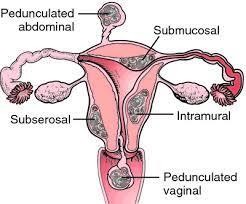A 54-year-old patient admitted with type 2 diabetes asks the nurse what "type 2" means.
What is the most appropriate response by the nurse?
"With type 2 diabetes, insulin secretion is decreased, and insulin resistance is increased."
"With type 2 diabetes, the body produces autoantibodies that destroy B-cells in the pancreas."
"With type 2 diabetes, the patient is totally dependent on an outside source of insulin."
"With type 2 diabetes, the body of the pancreas becomes inflamed."
The Correct Answer is A
Choice A rationale: With type 2 diabetes, insulin secretion is decreased, and insulin resistance is increased. This means that the pancreas does not produce enough insulin, and the cells of the body do not respond well to the insulin that is available. Insulin is a hormone that helps the body use glucose (sugar) for energy. Without enough insulin or with insulin resistance, glucose builds up in the blood, leading to high blood sugar levels and various complications.
Choice B rationale: This statement describes Type 1 diabetes, where the immune system destroys insulin-producing cells.
Choice C rationale: This describes type 1 diabetes, not type 2 diabetes. People with type 2 diabetes may or may not need to take insulin, depending on how well they can control their blood sugar levels with diet, exercise, and oral medications.
Choice D rationale: This refers to pancreatitis, which is a condition where the pancreas becomes inflamed due to infection, injury, or alcohol abuse. Pancreatitis can cause
severe abdominal pain, nausea, vomiting, fever, and elevated levels of pancreatic enzymes in the blood.
Nursing Test Bank
Naxlex Comprehensive Predictor Exams
Related Questions
Correct Answer is B
Explanation
Choice A rationale: Adenomas are benign tumors that originate from glandular tissue, such as the endometrium, the inner lining of the uterus.
Choice B rationale: Leiomyomas, also known as fibroids, are benign tumors that arise from the smooth muscle cells of the myometrium, the middle layer of the uterine wall. They are the most common type of uterine tumors, affecting up to 80% of women by age 50. They can cause symptoms such as heavy menstrual bleeding, pelvic pain, pressure, and infertility.
Choice C rationale: Endometriosis is a condition where endometrial tissue grows outside the uterus, causing inflammation and pain.
Choice D rationale: Adenomyosis is a condition where endometrial tissue invades the myometrium, causing enlargement and distortion of the uterus.

Correct Answer is D
Explanation
Choice A rationale: Furosemide is a loop diuretic used to increase urine output by blocking the reabsorption of sodium and water. It's not typically associated with hyperkalemia. In fact, it's more common for loop diuretics like furosemide to cause hypokalemia (low potassium) due to increased urinary excretion of potassium.
Choice B rationale: Lovastatin is a statin used to lower cholesterol levels. It is not related to increased cholesterol. Additionally, there is no known direct interaction between lovastatin and furosemide. Furosemide is a diuretic, while selective serotonin reuptake inhibitors (SSRIs) are a class of antidepressants, and they do not typically interact in a way that requires discontinuation.
Choice C rationale: Duloxetine is an antidepressant (SNRI), and glipizide is an oral diabetes medication. There's no direct interaction between duloxetine and glipizide that would necessitate discontinuation.
Choice D rationale: Trimethoprim/sulfamethoxazole (Bactrim) is a sulfonamide antibiotic, and glipizide belongs to the sulfonylurea class of medications. Both drugs contain sulfur groups in their chemical structures, and there is a possibility of cross-reactivity or drug interaction. This interaction can potentially reduce the effectiveness of glipizide, leading to compromised blood sugar control. Additionally, sulfonamide antibiotics like trimethoprim/sulfamethoxazole can cause adverse reactions, including skin rashes or hypersensitivity reactions, particularly in individuals sensitive to sulfa medications.
Whether you are a student looking to ace your exams or a practicing nurse seeking to enhance your expertise , our nursing education contents will empower you with the confidence and competence to make a difference in the lives of patients and become a respected leader in the healthcare field.
Visit Naxlex, invest in your future and unlock endless possibilities with our unparalleled nursing education contents today
Report Wrong Answer on the Current Question
Do you disagree with the answer? If yes, what is your expected answer? Explain.
Kindly be descriptive with the issue you are facing.
